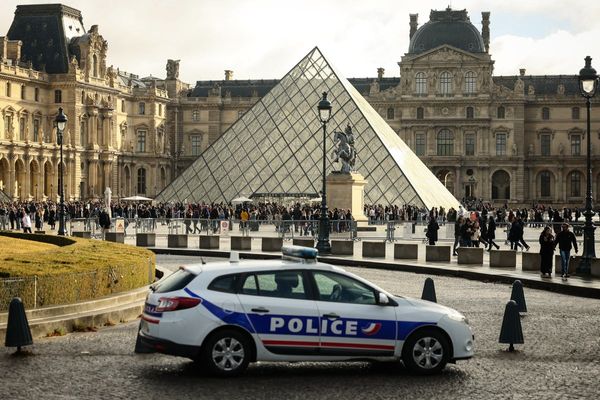
Competing news briefings. Divergent claims. And conflicting narratives.
As Indian attacks on Pakistan and Pakistan-administered Kashmir early on May 7 pulled the nuclear-armed neighbours to the brink of a potential military conflict, a parallel war quickly broke out – over information.
Within hours of the Indian strikes, authorities on both sides continue to put out claims and counterclaims that have been amplified on social media as each country tries to control the narrative in its favour.
Five Indian jets were downed, Pakistan said, for instance. India has yet to respond to the claim but Indian officials who requested anonymity said three jets had crashed in India-administered Kashmir but did not confirm whether they were Indian or Pakistani planes.
Here is a look at what both India and Pakistan have claimed so far – and how they have a history of competing narratives that often allow them to each assert wins over the other to their respective domestic audiences while making independent verification of the facts harder.
What has been targeted?
India said its forces hit “terrorist infrastructure” at nine sites in response to last month’s deadly shooting attack on tourists by suspected rebels in Pahalgam in India-administered Kashmir. India blamed Pakistan for the Pahalgam attack, in which 26 male civilians were killed. Islamabad denied the charges and asked India to provide evidence to back up its claims.
On Wednesday, Pakistan said Indian forces had hit six cities in Pakistan and Pakistan-administered Kashmir and a health centre.
Pakistan said 31 civilians were killed, including a three-year-old girl.
But Indian Defence Minister Rajnath Singh claimed his forces did not harm civilians. In a news briefing, Indian Air Force Wing Commander Vyomika Singh said the strikes led to “no collateral damage” and had been conducted through “precision capability”.
Meanwhile, on Thursday, the Indian government claimed that Pakistani attacks on its territory had killed 16 people, including five children.

Did Indian forces hoist a white flag?
On its official X account, the Pakistani government said Indian soldiers had raised a white flag, a common symbol of surrender, at a military post along the Line of Control (LoC), the de facto border that divides India-administered and Pakistan-administered Kashmir.
Pakistan’s Minister for Information and Broadcasting Attaullah Tarar echoed the claim on his X account, posting: “First they fled from the investigation, now they fled from the field.”
Indian authorities have yet to formally address the claim, but as India and Pakistan are not officially at war, it is unclear why New Delhi might feel the need to surrender.
Were warplanes downed? How many? And who did they belong to?
Pakistan’s military spokesperson, Ahmed Sharif Chaudhry, said five Indian jets had been downed, all within Indian territory, with planes from neither side crossing into the other’s airspace.
According to Indian security sources who spoke to Al Jazeera, three fighter jets were downed inside India-controlled territory. However, it was not clear which country the warplanes belonged to.
While there has been no comment from the federal government, the Indian embassy in China dismissed claims of Indian jets being brought down, criticising a report in the Chinese state media outlet Global Times as “disinformation”.

Have there been drone incursions?
On Thursday, Pakistan’s military spokesperson claimed Pakistan had downed 25 Israeli-made Herop drones using technical equipment and weapons, adding that one civilian had died and four Pakistani soldiers had been wounded.
Meanwhile, the Indian Ministry of Defence said Pakistani forces attempted to “engage a number of military targets” in multiple areas in northern and western India using “drones and missiles”.
The ministry added that Indian forces struck air defence radars and systems at multiple locations in Pakistan.
Neither India nor Pakistan has so far responded to the claims made by the other side.
History of conflicting claims
Previous escalations between India and Pakistan have also generated conflicting claims and accusations, often leaving observers to ponder which account, if either, reflects the truth.
In February 2019, Indian forces said they had hit a large number of “JeM [Jaish-e-Muhammad] terrorists, trainers, senior commanders and groups of jihadis” in Balakot in Pakistan-administered Kashmir, weeks after a suicide attack killed 40 members of the security forces in India-administered Kashmir’s Pulwama.
Formed in 2000, JeM has carried out numerous attacks on Indian forces in India-administered Kashmir. Both India and Pakistan have designated the armed group as a “terrorist organisation”, but its leader Masood Azhar has been allowed to operate in Pakistan. His current whereabouts are unknown.
Pakistan, which denied having a role in the Pulwama attack, said the Indian air attacks in 2019 hit an uninhabited forest.
Similarly, in 2016, Pakistan rejected India’s claims of “surgical strikes” against “terrorist units” on its territory after an attack on an Indian army base killed 18 soldiers in Uri in India-administered Kashmir.
The Pakistani military called the claims an “illusion” and said India had engaged in nothing more than “cross-border fire … which is an existential phenomenon”.
Madiha Afzal, a scholar at the Brookings Institution in Washington, DC, said controlling the narrative has been a “fundamental element” on both sides in the 77-year-old conflict between India and Pakistan.
That has become more difficult in an age of “easily accessible information as well as social media”, Afzal said. Nevertheless, she added: “If local media largely follows the state’s preferred narratives in both India and Pakistan, which it does, the state can easily control public perception to its advantage and rally public support in its favour.”







